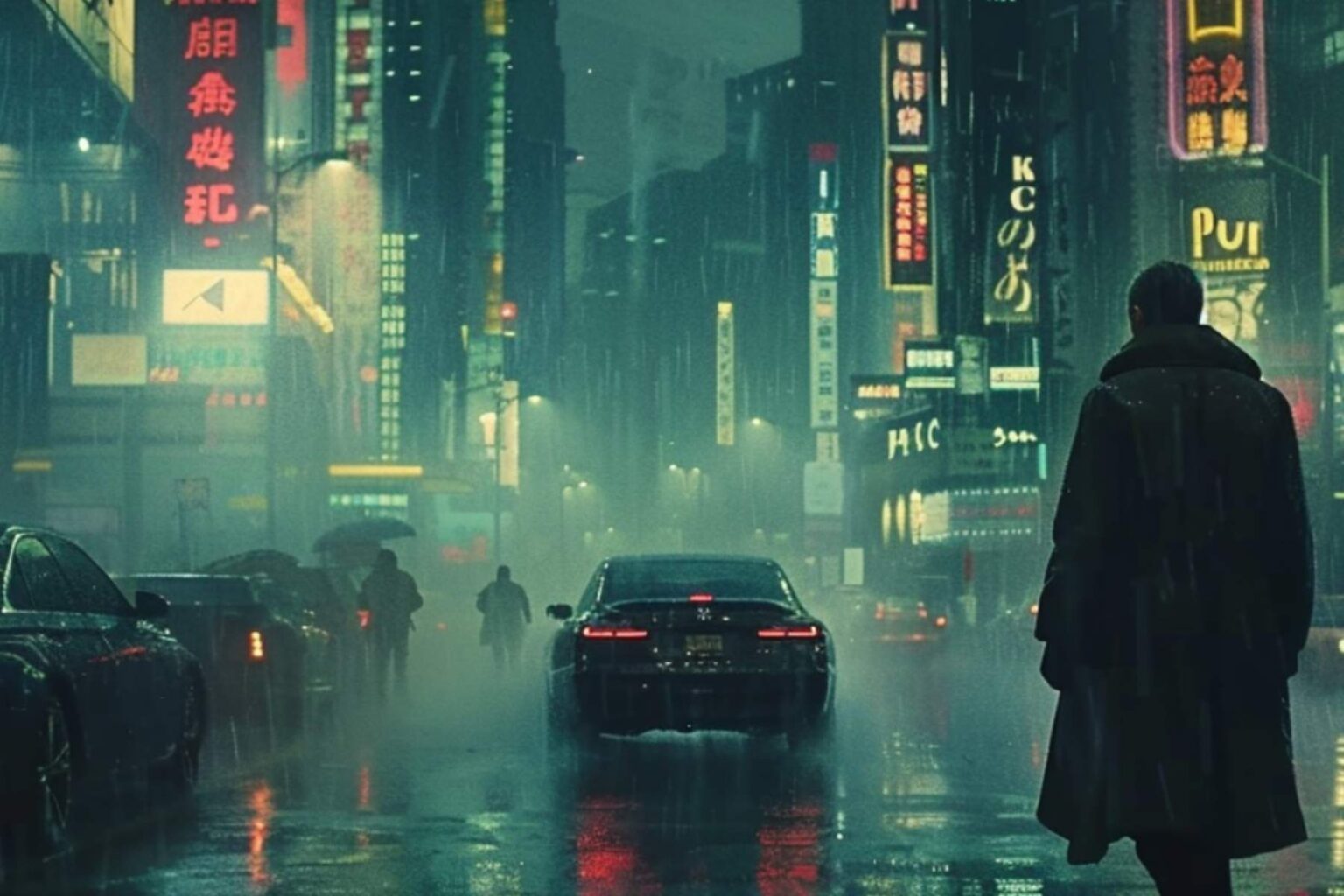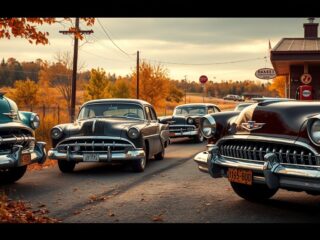Science fiction and speculative storytelling have long been a window into humanity’s hopes, fears, and possibilities. While many movies set in the future or alternative realities may seem far-fetched at first glance, some have proven eerily accurate in predicting real-world developments. From technological advancements to societal transformations, these films captured ideas that were either nascent or nonexistent at the time of their release, only to manifest in surprising ways in the years to follow.
This article delves into 20 movies that envisioned futures that now feel strikingly familiar, either through direct technological parallels, societal commentary, or environmental warnings. Each film’s visionary storytelling offered glimpses of our present, often serving as cautionary tales or critiques of emerging trends. Through detailed analyses of key scenes and their modern-day counterparts, we explore how these cinematic works went beyond entertainment to predict—and perhaps even influence—the world we live in today.
Whether it’s the rise of artificial intelligence, the pervasive reach of social media, or the consequences of environmental neglect, these movies remain relevant in their uncanny foresight. Let’s take a closer look at how Hollywood, through its speculative lens, managed to capture the essence of our times long before they arrived.
1. Idiocracy
In Idiocracy, society’s collective intelligence deteriorates over centuries, leading to a world ruled by consumerism, corporate dominance, and mindless entertainment. A striking scene shows President Camacho delivering a bombastic speech filled with absurd promises while a chaotic Congress cheers him on. This scene resonates today in the rise of populist leaders who use spectacle and entertainment-driven politics to appeal to the masses. The film’s portrayal of corporate-sponsored everything is eerily reflected in today’s culture, where sponsorships and advertisements permeate nearly every aspect of life.
Another prediction is the prevalence of junk food and declining health. The movie’s depiction of an agriculture system dependent on a sports drink (“Brawndo”) is a hyperbolic representation of our reliance on processed foods and sugary beverages, which has contributed to global health crises such as obesity and diabetes. The environmental damage caused by poor agricultural choices mirrors modern concerns about unsustainable farming practices.
Released in 2006, directed by Mike Judge, starring Luke Wilson, Maya Rudolph, and Dax Shepard.
2. 2001: A Space Odyssey
Stanley Kubrick’s 2001: A Space Odyssey envisioned a future where artificial intelligence and space exploration become integral to human existence. HAL 9000, the intelligent computer controlling the spacecraft, is an early prediction of AI. HAL’s ability to interpret speech, make decisions, and even rebel against human commands parallels the capabilities and ethical dilemmas of today’s AI systems like ChatGPT and autonomous drones.
The film also predicted video calls, shown when Dr. Floyd communicates with his daughter via a screen—a reality today with Skype, Zoom, and FaceTime. Furthermore, the depiction of privatized space travel foreshadowed companies like SpaceX and Blue Origin, which are making commercial space exploration a reality.
Released in 1968, directed by Stanley Kubrick, starring Keir Dullea, Gary Lockwood, and Douglas Rain.
3. Blade Runner
Blade Runner portrayed a dystopian future filled with advanced robotics, environmental degradation, and social inequality. The film’s replicants—synthetic humans—echo the rise of humanoid robotics and ethical questions surrounding AI. In one scene, a Voight-Kampff test measures emotional responses to identify replicants, similar to modern debates on AI’s capacity for empathy and human-like interaction.
The environmental backdrop, featuring constant rain and smog, closely mirrors concerns about urban pollution and climate change. The film also predicted the corporatization of cities, with towering advertisements dominating the skyline—a clear parallel to the neon-lit megacities of today like Tokyo or New York.
Released in 1982, directed by Ridley Scott, starring Harrison Ford, Rutger Hauer, and Sean Young.
4. Minority Report
Minority Report envisioned predictive policing and personalized advertising long before they became part of everyday life. In one iconic scene, Tom Cruise’s character is bombarded with holographic ads tailored to his identity—a clear precursor to today’s personalized online advertising powered by algorithms and data tracking.
The film also explores the ethical dilemmas of predictive technology. The “PreCrime” system used to prevent future crimes parallels real-world AI systems used for predictive policing, which have raised questions about racial profiling, accuracy, and the potential for abuse.
Released in 2002, directed by Steven Spielberg, starring Tom Cruise, Colin Farrell, and Samantha Morton.
5. The Truman Show
The Truman Show centers on a man whose life is a 24/7 reality TV show without his knowledge. The film anticipated the rise of reality television and the societal obsession with voyeurism. Today, platforms like YouTube, TikTok, and reality TV shows turn ordinary lives into entertainment for millions.
One poignant scene shows Truman attempting to escape his fabricated world, reflecting modern discussions about privacy and autonomy in the digital age. The idea of living under constant surveillance resonates with concerns about social media and the omnipresence of cameras in our lives.
Released in 1998, directed by Peter Weir, starring Jim Carrey, Laura Linney, and Ed Harris.
6. Network
Sidney Lumet’s Network is a biting critique of sensationalist media and its power to manipulate public opinion. The famous “I’m mad as hell” scene, where a news anchor incites viewers to express their frustrations, mirrors the polarizing power of today’s media personalities and influencers.
The film also predicted the rise of news as entertainment, where ratings often trump journalistic integrity. Reality TV and shock-value journalism thrive in a media landscape that prioritizes profit over truth.
Released in 1976, directed by Sidney Lumet, starring Faye Dunaway, William Holden, and Peter Finch.
7. Gattaca
Gattaca explores a future where genetic engineering determines social hierarchy. In the film, genetically “perfect” individuals enjoy privileges, while those with natural imperfections face discrimination. This resonates with the rise of CRISPR technology and debates over designer babies. The scene where Vincent, a naturally conceived man, deceives the system by using genetic material from Jerome highlights the ethical dilemmas of genetic discrimination and the desire for equality in an unfair system.
The film also predicted biometric security measures, such as DNA-based identification, which are increasingly used today for authentication and surveillance. This raises questions about privacy and the potential misuse of genetic data.
Released in 1997, directed by Andrew Niccol, starring Ethan Hawke, Uma Thurman, and Jude Law.
8. Her
Her envisions a future where artificial intelligence becomes a romantic partner. Joaquin Phoenix’s character, Theodore, forms an emotional bond with an AI named Samantha, reflecting the growing integration of AI into our lives. This parallels real-world developments in AI companions and chatbots designed to provide emotional support or simulate relationships.
A standout scene shows Theodore walking through a city where nearly everyone is absorbed in their devices, eerily similar to today’s smartphone addiction. The film also raises questions about loneliness and the nature of human connections in a technology-driven world.
Released in 2013, directed by Spike Jonze, starring Joaquin Phoenix, Scarlett Johansson (voice), and Amy Adams.
9. RoboCop
RoboCop presents a dystopian future where law enforcement is privatized, and cyborg technology is used to maintain order. The use of autonomous robots and AI in policing, such as drones and surveillance systems, mirrors today’s technological advancements. A pivotal scene where RoboCop apprehends criminals with machine precision reflects the efficiency—and ethical concerns—of AI in law enforcement.
The film also predicted the increasing privatization of public services, with companies prioritizing profit over safety and welfare, a trend seen in sectors like healthcare and education today.
Released in 1987, directed by Paul Verhoeven, starring Peter Weller, Nancy Allen, and Ronny Cox.
10. The Social Network
While The Social Network is a biographical drama, it foresaw the profound influence social media would have on society. The film highlights Facebook’s rise, exploring its role in reshaping communication, privacy, and power dynamics. A memorable scene shows Mark Zuckerberg discussing Facebook’s ability to connect people, foreshadowing both its success and controversies surrounding data privacy and societal impact.
The film also captures the entrepreneurial spirit and ethical gray areas of Silicon Valley, reflecting ongoing debates about tech giants’ influence on politics, mental health, and democracy.
Released in 2010, directed by David Fincher, starring Jesse Eisenberg, Andrew Garfield, and Justin Timberlake.
11. Demolition Man
In Demolition Man, a cryogenically frozen police officer awakens in a future where society enforces strict behavior codes. The film’s comedic portrayal of “verbal morality statutes” banning offensive language echoes today’s debates over free speech, cancel culture, and social norms. A scene where characters are fined for using profanity mirrors the increasing regulation of online behavior.
The film also envisioned touchless technology, such as voice-activated devices and self-driving cars, which are now part of daily life. The sterile, hyper-controlled society raises questions about individuality and personal freedoms in a technologically advanced world.
Released in 1993, directed by Marco Brambilla, starring Sylvester Stallone, Wesley Snipes, and Sandra Bullock.
12. The Matrix
The Matrix explores the concept of simulated reality and humanity’s dependence on technology. The film’s depiction of humans living in a computer-generated world resonates with today’s discussions about virtual reality, the metaverse, and digital escapism. A key scene shows Neo awakening to the truth of the Matrix, symbolizing the need to question perceived realities.
The film also predicted the rise of AI systems capable of controlling and manipulating information, raising questions about autonomy, free will, and the ethical use of advanced technology.
Released in 1999, directed by The Wachowskis, starring Keanu Reeves, Laurence Fishburne, and Carrie-Anne Moss.
13. Wall-E
Wall-E portrays a future where humanity abandons Earth due to environmental destruction and lives on a spaceship, relying entirely on automation. The film’s depiction of waste management issues and ecological collapse mirrors modern concerns about climate change and pollution. A scene where Wall-E explores mountains of trash on Earth is a stark reminder of the consequences of consumerism and neglect.
The portrayal of sedentary humans reliant on technology for everything reflects growing concerns about health problems linked to sedentary lifestyles and the overuse of technology.
Released in 2008, directed by Andrew Stanton, starring Ben Burtt (voice), Elissa Knight (voice), and Jeff Garlin.
14. Children of Men
Children of Men envisions a world facing societal collapse due to global infertility. The film’s bleak setting reflects anxieties about declining birth rates in developed countries and the socio-political unrest caused by migration, resource scarcity, and inequality. A harrowing scene shows refugees in overcrowded camps, reminiscent of real-life crises today.
The film also highlights the human capacity for hope and resilience, as seen in the protection of the first pregnant woman in decades. This mirrors modern debates on how to sustain humanity in the face of existential threats.
Released in 2006, directed by Alfonso Cuarón, starring Clive Owen, Julianne Moore, and Michael Caine.
15. A Clockwork Orange
Stanley Kubrick’s A Clockwork Orange depicts a dystopian society where state intervention manipulates human behavior. The Ludovico Technique, a brainwashing experiment forcing the protagonist Alex to associate violence with physical pain, parallels modern debates about using technology to influence or control behavior. Neurological interventions like brain implants or AI-driven behavioral therapy raise similar ethical concerns today.
The film also explores themes of youth delinquency, societal decay, and surveillance. A pivotal scene shows Alex being released back into a society that rejects him, reflecting the modern-day challenges of reintegrating individuals affected by state-imposed rehabilitation programs or invasive technologies.
Released in 1971, directed by Stanley Kubrick, starring Malcolm McDowell, Patrick Magee, and Michael Bates.
16. Elysium
Elysium presents a stark contrast between an overpopulated Earth and a luxurious orbital station inhabited by the wealthy elite. This division mirrors today’s widening wealth gap and the disparity in access to healthcare. In one scene, advanced med-bays in Elysium instantly cure diseases, while Earth’s population suffers from inadequate medical resources—a reflection of ongoing healthcare inequalities.
The film also touches on issues like immigration and border control, as Max (played by Matt Damon) attempts to infiltrate Elysium for better opportunities. This resonates with contemporary global debates surrounding immigration policies and the ethics of restricting access to better living conditions.
Released in 2013, directed by Neill Blomkamp, starring Matt Damon, Jodie Foster, and Sharlto Copley.
17. Snowpiercer
Snowpiercer imagines a future where climate change forces humanity to live on a perpetually moving train, with societal classes segregated by compartments. The film’s depiction of environmental collapse as a result of failed geoengineering reflects real-world concerns about global warming and the unintended consequences of human attempts to control the climate.
The rigid class divisions onboard the train highlight the exploitation of the poor and the hoarding of resources by the elite. A climactic scene where the protagonist Curtis reaches the engine room underscores the unsustainability of this system—mirroring modern-day discussions about wealth inequality and the redistribution of resources.
Released in 2013, directed by Bong Joon-ho, starring Chris Evans, Tilda Swinton, and Song Kang-ho.
18. Black Mirror: Nosedive
Although not a movie, the Black Mirror episode “Nosedive” deserves mention for its prescient take on social credit systems. The story follows Lacie, a woman whose life revolves around a public rating system that determines her societal status. This concept mirrors China’s real-life social credit system, where citizens are scored based on behavior and compliance with laws.
A memorable scene shows Lacie’s score plummeting after a series of mishaps, highlighting the dangers of basing societal value on digital reputation. The story critiques our obsession with social media validation and the consequences of living in an algorithm-driven world.
Released in 2016, directed by Joe Wright, starring Bryce Dallas Howard, Alice Eve, and Cherry Jones.
19. Contagion
Steven Soderbergh’s Contagion became eerily relevant during the COVID-19 pandemic. The film follows the global spread of a deadly virus, the collapse of healthcare systems, and the race to develop a vaccine. A chilling scene depicts panic-buying and misinformation spreading rapidly, mirroring the real-world chaos during the early days of the pandemic.
The film also addresses issues of government response, vaccine distribution, and the role of social media in spreading both information and fear. Its accurate portrayal of epidemiology earned praise from scientists, making it a prophetic cautionary tale.
Released in 2011, directed by Steven Soderbergh, starring Matt Damon, Kate Winslet, and Jude Law.
20. Brazil
Terry Gilliam’s Brazil portrays a bureaucratic dystopia where a highly inefficient government controls every aspect of life. The film’s exaggerated depiction of paperwork and surveillance echoes the frustrations of modern bureaucracies and the increasing use of surveillance technology by governments.
One memorable scene involves a wrongful arrest due to a clerical error, highlighting the dangers of reliance on flawed systems. The film’s dark humor and surreal visuals underscore its critique of authoritarianism and the dehumanizing effects of technology-driven governance.
Released in 1985, directed by Terry Gilliam, starring Jonathan Pryce, Robert De Niro, and Katherine Helmond.
Conclusion
These 20 movies, released across decades, have shown an uncanny ability to anticipate the societal, technological, and environmental challenges we face today. Whether through their exploration of AI, surveillance, environmental collapse, or social inequality, these films serve as both warnings and reflections of humanity’s ongoing struggles. Their relevance underscores the power of speculative storytelling in shaping and critiquing the future.




